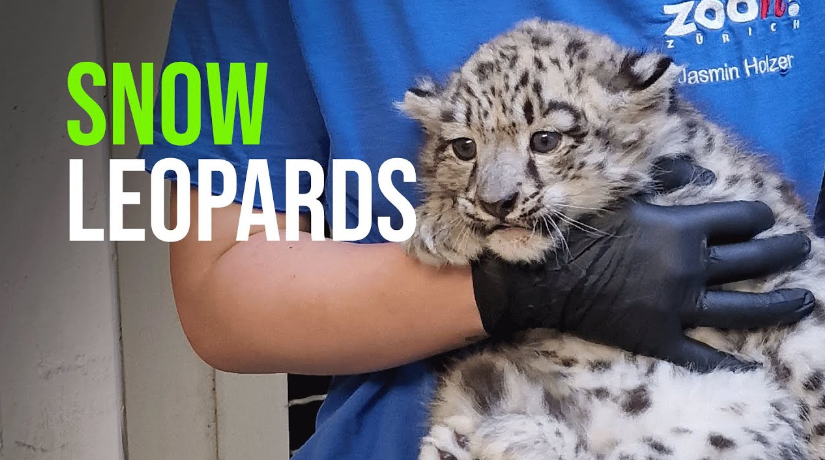Introduction to Snow Leopards and Their Conservation Status
Snow leopard, the elusive and majestic big cats of the Himalayas, roam some of the world’s most rugged terrains. With their stunning gray coats adorned with black rosettes, they are a sight to behold in their natural habitat. Yet, these magnificent creatures face an uncertain future. As climate change impacts their mountainous home and human activities encroach upon their territory, efforts to conserve snow leopards have never been more critical.
Currently classified as “vulnerable” by the International Union for Conservation of Nature (IUCN), snow leopards are at risk due to various threats. However, dedicated conservationists and organizations around the globe work tirelessly to protect them. There is hope on the horizon as success stories emerge from innovative strategies aimed at safeguarding these beautiful animals.
Join us on this journey into the world of snow leopard conservation—exploring both its challenges and triumphs while uncovering how we can all play a part in ensuring that these captivating cats continue to grace our planet for generations to come.
Main Threats to Snow Leopard Populations
Snow leopards face a myriad of threats that endanger their survival. Habitat loss is one of the most pressing issues. As human populations expand, these majestic cats lose critical space for hunting and breeding.
Poaching poses another significant danger. Snow leopards are hunted for their beautiful fur and body parts, which are often sold on the black market. This illegal trade severely impacts their already dwindling numbers.
Livestock grazing also contributes to conflict between humans and snow leopards. Farmers may retaliate against these predators if they attack livestock, further jeopardizing the species’ future.
Climate change introduces additional challenges by altering ecosystems where snow leopards thrive. Melting glaciers and shifting prey patterns disrupt their natural habitat, making it harder for them to find food.
These combined threats paint a grim picture for snow leopard populations worldwide. Each factor intertwines, complicating conservation efforts aimed at protecting this iconic species.
Efforts by Conservation Organizations and Governments
Around the world, various conservation organizations are dedicated to safeguarding snow leopards. Their initiatives often focus on habitat preservation, anti-poaching measures, and raising awareness within local communities.
Governments in snow leopard range countries have also stepped up efforts. They frequently collaborate with NGOs to implement strategies that protect these elusive cats. Policies aimed at sustainable land use help reduce human-wildlife conflict.
Community-based programs empower locals by providing training and resources for wildlife protection. These initiatives create a sense of ownership and responsibility towards snow leopards.
Moreover, international partnerships play a vital role in funding conservation projects. By pooling resources and knowledge across borders, organizations can achieve greater impact.
Technology is increasingly used to monitor populations through camera traps and GPS tracking. This data helps inform effective conservation strategies tailored to specific environments where snow leopards thrive.
Success Stories of Snow Leopard Conservation
In recent years, several remarkable success stories have emerged in the realm of snow leopard conservation. One standout example is the efforts in Bhutan, where community-based initiatives have led to a significant increase in local awareness and support for snow leopards. By promoting sustainable practices, communities are learning to coexist with these majestic animals.
Another inspiring case comes from Mongolia’s Altai Mountains. Here, dedicated conservationists collaborated with herders to implement livestock protection strategies. The results? A noticeable decline in retaliatory killings of snow leopards.
Additionally, Nepal has taken strides toward habitat preservation through national parks that protect both wildlife and their ecosystems. Innovative programs involving eco-tourism have encouraged locals to see value in preserving their snowy neighbors rather than perceiving them as threats.
These stories shine a light on what’s possible when communities unite for a common cause: safeguarding the extraordinary snow leopard for future generations.
Challenges in Protecting Snow Leopards and Their Habitats
Protecting snow leopards is a complex task. These elusive big cats inhabit remote mountain ranges, making them difficult to monitor and study.
Habitat loss poses a significant threat. As human populations expand, their natural environments are increasingly encroached upon by agriculture and infrastructure development. This fragmentation disrupts migration routes and mating patterns.
Additionally, climate change impacts the delicate ecosystems these animals rely on. Altered weather patterns can lead to shifts in prey availability, further stressing the snow leopard population.
Poaching remains another critical issue. Although they are protected by law, illegal hunting for pelts or retaliatory killings due to livestock predation continues to threaten their numbers.
Community engagement is essential yet challenging. Convincing local populations of the importance of conservation requires education about coexistence with wildlife while offering incentives that benefit both people and nature.
What You Can Do to Help Save Snow Leopards
Supporting snow leopard conservation can start with simple actions. Educating yourself and others about their plight is crucial. Share information on social media or in your community to raise awareness.
Consider donating to reputable organizations dedicated to protecting these magnificent creatures. Many non-profits focus on habitat preservation, anti-poaching efforts, and local community engagement.
Adopting sustainable practices in your daily life also makes a difference. Reducing plastic use helps mitigate pollution that affects wildlife habitats, including those of the snow leopard.
If you’re an outdoor enthusiast, choose eco-friendly travel options when exploring areas where snow leopards roam. Respect local cultures and wildlife regulations to minimize your impact on their environment.
Advocate for policies supporting wildlife protection at national and global levels. Your voice matters; every effort counts in the fight for the survival of this majestic species.
Conclusion
Snow leopards are a symbol of the majestic mountains they inhabit. Their survival hinges on our collective efforts to address the challenges they face. By understanding their habitat needs and supporting conservation initiatives, we can make a difference.
The story of snow leopard conservation is not just one of struggle; it’s also filled with hope and resilience. Each success story inspires further action. The commitment from communities, governments, and organizations plays a crucial role in creating sustainable solutions.
Every individual can contribute to this cause. Simple actions like spreading awareness, supporting eco-friendly products, and advocating for wildlife protection laws can significantly influence the fate of these incredible creatures.
Protecting the snow leopard is about preserving biodiversity and ensuring that future generations will experience its beauty in the wild. Together, we have the power to create lasting change for these enigmatic big cats and their habitats.


